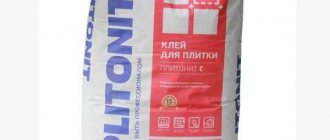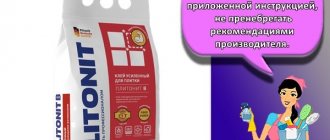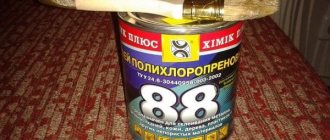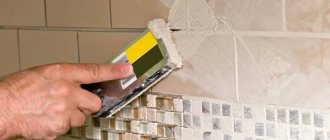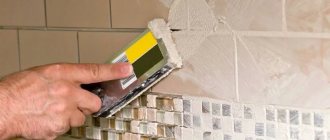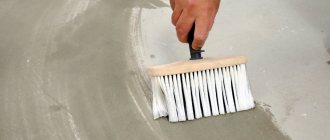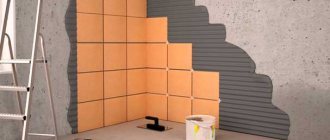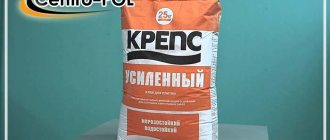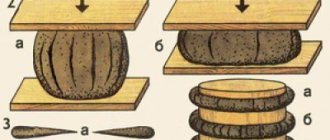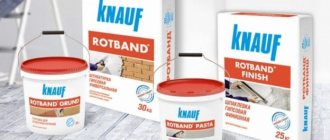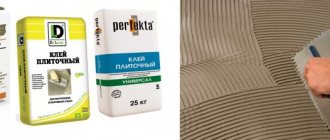Tile adhesive PLITONIT B 25kg
Purpose Plitonit B is a tile adhesive intended for laying ceramic tiles of all types and sizes, both indoors and outdoors.
Excellent for gluing on surfaces made of reinforced concrete, concrete, brick, cement, plasterboard, and also recommended for cladding work on plasterboard and for “warm floors”. Tile adhesive Plitonit B has excellent plasticity, mixes well with water, and adheres well to vertical bases, which makes it very convenient for finishing work. The ease of mixing and applying the glue, the speed of its drying, all this allows you to grout joints or walk on the facing floor within 24 hours. Excellent moisture and frost resistant qualities are a guarantee of its long service life.
Consumption The average consumption of Plitonit B tile adhesive ranges from 1.7 to 5 kg/m2, depending directly on the size of the tile. Important factors for changes in consumption are: the method of applying glue, various irregularities on the facing surface, and other losses that are possible during repair work. And, of course, the professional skills of the cladding contractor. The consumption is as follows: when using 25 kg of glue, and the size of the largest side of the tile is up to 108 mm, you can lay 25 m2 of tiles. And with a tile length of 300 mm or more – 5 m2.
Recommendations When carrying out construction work using Plitonit B glue, the following temperature conditions must be observed: after completion of all work, the temperature in the room for three days should be in the range from +5 to +30 °C. Walking on a floor lined with Plitonit V glue, as well as grouting joints, is permissible no earlier than 24 hours after completion of all work. When laying tiles, be sure to clean the back side of them from possible contamination. And stir the solution itself from time to time.
The base on which the glue will be applied must be durable. Be sure to clean it of dirt, dust, grease and elements that may peel off in the future. When working with surfaces that have a porous structure (for example, aerated concrete), they should be pre-treated with a primer.
Preparation of the solution To prepare the mortar mixture, it is necessary to use water based on the ratio of 0.20-0.23 l per 1 kg of dry mixture. You can use simple running drinking water. Pour the glue into a pre-measured amount of water at room temperature. Stir the mixture until a homogeneous consistency is formed. Typically, when using an electric mixer or electric drill, this will only take a couple of minutes. After leaving the mixture to sit for 5 minutes, continue stirring while adding water, but do not exceed the maximum specified ratio of water per 1 kg of dry glue. The finished mixture can be used for no more than 4 hours from the moment of mixing. High ambient temperatures reduce this time.
| Maximum filler fraction | 0.63 mm |
| Adhesion | 0.5 MPa |
| Dry mixture consumption | 5.1 kg/m2 |
| Water consumption | 5.0-6.0 l/mesh |
| Opening hours | 15 minutes |
| Tile adjustment time | 15 minutes |
| Viability of solution | 4 hours |
| Bag weight | 25 kg |
Cost of tile adhesive The average market price for Plitonit V is from 220 rubles. For the same price, our online store offers analogues: Osnovit AC11 Starplix, Kreps reinforced and Ceresit CM11. If you decide to buy Plitonit B, then we have the best price for you, call!
Factors affecting the rate of hardening
Hardening of any adhesive mixture occurs in several stages. At the first stage, it retains its adhesive properties and optimal ductility for adjustments. Primary hardening occurs when the tile is already laid on the surface, but in the first minutes it is still possible to adjust the position of the tile.
The duration of all these stages can vary depending on five basic factors:
- environmental humidity;
- ambient temperature;
- working layer thickness;
- surface type;
- brand of glue.
Ambient humidity
High air humidity increases the drying time. And, conversely, when the air is dry, floor tiles dry faster. Thus, if the manufacturer indicates on the packaging the hardening time of its glue of 1-2 days, then when used in the bathroom and other rooms with increased dampness, the time can increase to 3-4 days.
Temperature
The adhesive sets faster in rooms with elevated air temperatures.
The optimal temperature range is +20…+22 °C. Depending on the brand of tile adhesive, the value may vary between +5...+30 °C. When the air cools below +5 °C, laying tiles is not recommended. It is better to wait for the temperature to rise or use additional heating.
Unnatural heating of the room is used as a last resort, since the quality of the coating suffers, the tiles become deformed or crack.
In summer, tiles stick faster than in winter, since the composition can not only harden, but freeze. This applies to non-frost-resistant mixtures.
Layer thickness
The hardening time of tile adhesive is directly proportional to the thickness of the adhesive layer. The larger it is, the longer it will take for the tile to set. If the mixture is applied unevenly, its drying time will differ in different areas of the surface.
To reduce the thickness of the layer, you can first level the base or apply the composition with a spatula with a smaller tooth height.
Material size
The number of tile joints affects the rate of moisture evaporation from the solution. When laying small tiles or mosaics, the total area of the seams is larger than when working with large tiles, so the glue will dry much faster in the first case.
The drying speed is also affected by the density of the facing material; for example, clay floor tiles will dry faster than porcelain stoneware.
Main surface material
On a surface with a high level of moisture absorption, the adhesive solution will dry much faster. The degree of absorption is determined by the porosity of the material. The more porous it is, the better the base absorbs liquid. In this case, the glue sets faster.
On a concrete screed, the glue takes longer to dry than when gluing tiles to a standard screed, since concrete does not absorb liquid from the solution well.
Brand and type of composition
- Standard adhesives. They freeze throughout the day. When t °C drops below +5 °C, the solution can dry out for at least 3 days.
- Reinforced. Dries faster. On average, complete contraction takes 12-24 hours. They are used for installation of large-sized cladding. Adheres well to concrete.
- Superglues. Their use speeds up repair work; after gluing the tiles, you can start grouting the joints within 4 hours. They adhere well to any surface and can be used in rooms with high dampness, and swimming pools. The main disadvantage is the high cost.
- Moisture resistant. Used in rooms with high dampness (steam rooms, swimming pools, bathrooms). An additional component is antiseptics that prevent the development of mold, mildew, and bacteria. They dry within a day.
- White. These are white cement-based adhesives for laying transparent tiles, glass blocks, and glass mosaics. They dry out within a day. After them there are no divorces left.
- Frost-resistant. Used in outdoor work. Tiles sit on them on facades, stairs, terraces. Withstands at least 10 freeze/thaw cycles. The average curing time is 36 hours.
| Type/brand of glue | Purpose | Time for adjustment, min | Duration of hardening, hours |
| Universal (Plitonit B, Knauf Fliesen, Osnovit Mastplix T-12, Yunis 2000, Ceresit SM 16) | Laying tiles of small dimensions, most often when carrying out interior work | 10-15 | 8 |
| Moisture resistant (Ceresit SM 11, Litokol, Knauf Flizen Plus, Yunis Pool, Typhoon Lux Plus) | Work in rooms with high humidity, tiling of swimming pools, showers, saunas | 15-20 | 24 |
| Frost-resistant (Ceresit CM 17, Ceresit CM 117, Yunis 2000) | Exterior works, decoration of building facades, terraces and stairs | 30 | 36 |
| White (Unis Belfix) | Laying glass blocks and working with mosaic elements | 10-15 | 24 |
| Reinforced (Ceresit 18, Yunis +) | Installation of large tiles | 10 | 12-24 |
| Fast-hardening (Osnovit Scorplix, Bolars Express) | Provides quick setting when laying tiles and porcelain stoneware | 10 | 3 |
Determining surface unevenness
So, we know exactly the area to be tiled and we know the recommended adhesive thickness in mm for store-bought tiles. However, it is too early to calculate the glue. It is necessary to take a flat aluminum rule or a long level and walk over the entire surface of the pre-plastered walls or screed poured onto the floor. During this procedure, it is necessary to adequately assess the surface roughness. For example, a rule was set on the edge of the screed and in some places depressions are visible. It is the depth and number of these depressions that need to be assessed.
Of course, no one will make such measurements with a micrometer in their hands. Unevenness is assessed by eye. For example, drops and depressions of approximately 2 mm in depth were found across the entire floor area - this value will be considered “zero”. That is, when covering the screed, 2 mm of glue will be required to level the depressions + the minimum thickness of the glue, determined based on the size of the floor tiles. Only in this way will it be possible to determine the actual thickness of the future glue.
Advice!
If during the examination of the surface differences of more than 5 mm were revealed, then in order not to overpay for a huge amount of tile adhesive, it is cheaper to level such a surface with cheaper materials. Fill the screed or putty.
We look at the consumption indicated on the bag of glue
On average, tile adhesive consumption ranges from 1 to 1.8 kg with a layer thickness of 1 mm for cladding 1 square meter. m. The difference in consumption between different brands of adhesive is due to the fact that there are thin-layer and thick-layer tile adhesives. Naturally, different brands of glue have different shrinkage during hardening and drying.
For example, you liked the price and quality of Litokol K66 tile adhesive. Its consumption is 1.5 kg per 1 sq. m. with a thickness of 1 mm. Before this, the unevenness of the surface was previously determined and, based on the size of the tiles, it was established that the actual thickness of the glue would be 5 mm. Therefore, we multiply 1.5 by 5 and get 7.5 kg - the weight of the adhesive for cladding is 1 sq. m. Next, 7.5 is multiplied by the total amount of floor area to be tiled, well, let’s say 10 square meters. m. As a result, we find that for covering a floor with an area of 10 square meters. m. you will need 75 kg of glue. And then, already knowing that 1 bag weighs 25 kg, it is not difficult to calculate that 3 bags of tile adhesive will be needed to cover the floor.
Self-leveling floor levelers
When carrying out renovation work, special attention is paid to the design of the room. Beauty and comfort are created by straight lines of walls and a smooth floor without unevenness. To lay laminate, parquet or linoleum, care must be taken to level the floor. To this end, manufacturers have created a new product. A mixture of components for preparing a suspension, the so-called floor leveler. Possessing good fluidity, they spread independently over the floor surface.
Floor levelers, or otherwise self-leveling, self-leveling floors. They are mixtures of various substances, plasticizers, from which dispersed solutions are made by mixing with water. They serve to eliminate various defects that the floor may have after the completion of the construction process.
All levelers perform their functions and serve :
- for leveling before applying base material or other leveling agent;
- pouring floor screed;
- to create a more even surface . The so-called “finishers”;
- for carrying out restoration work on wooden floors; This allows for the presence of special fibers in the mixture that promote better adhesion to wood;
- dry in a shorter time;
- after drying they have a more durable surface;
- long service life;
- frost resistance;
- acceptable prices;
- plasticity, fluidity, easy to apply;
- do not crack, form a smooth surface that does not require cleaning;
- ease of use, cost-effectiveness and efficiency;
- great end result . Can be used as a base and as a finished, even coating;
Floor levelers are distributed along the entire perimeter of the room. When dry, they present a surface without bumps and depressions, without cracks. The composition used when pouring a self-leveling floor dries faster.
Self-leveling compositions are non-toxic , non-flammable, and frost resistant.
All produced mixtures of this type are based on cement or gypsum. When choosing a mixture, you should be guided by the type of room where they will be used. Cement floor levelers can be used in any conditions, with any temperatures and humidity . The size of the screed can vary from 2 mm to 50 mm. Drying time is no more than 3 or 5 hours. In terms of sales price, they are more expensive than plaster.
Levelers with a gypsum base can only be used in rooms where there is no humidity. This is due to the chemical properties of this material. You can pour screed up to 1 cm thick.
Peculiarities
The Plitonit company is a joint Russian-German production of construction chemicals intended for professional and household use. Tile adhesive Plitonit B is one of the names of the huge range of products of this brand. It is designed for laying ceramics and porcelain tiles indoors. The base for gluing can be made of various building materials: concrete, reinforced concrete, gypsum plaster, brick, tongue-and-groove slabs. This type of glue is also used for covering floors that are equipped with a heating system.
Due to the plasticity of the composition, the facing material does not slide off vertical surfaces.
The composition of the solution includes cement binders and adhesives, as well as fillers with a maximum grouping of grains up to 0.63 mm and modifying additives that give it increased adhesive qualities.
Advantages and disadvantages
The use of Plitonit B glue has its advantages.
- Acceptable product price.
- High elasticity of the material.
- Preparing glue for work does not require any special skills. It mixes easily with liquid even without a mixer.
- Has excellent adhesion to vertical surfaces.
- Moisture and frost resistance of the product. Can be used for outdoor work, as well as in rooms with high humidity.
- High performance.
- Installation takes a minimum amount of time.
- Wide range of use.
There are basically no disadvantages when using this adhesive solution, but if installation work is carried out incorrectly, the facing materials may lag behind the surface. The material is available in bags of 5 and 25 kg; it is not possible to purchase the mixture in a smaller volume.
Trainings and seminars
Our priorities lie in the area of increasing the efficiency of construction and finishing, through improving the qualifications of finishing craftsmen, conducting technical seminars and master classes. We organize training seminars of various formats, incl. based on the customer and leading retail market operators. Qualified technical specialists introduce students to the most modern PLITONIT technologies and materials, and also allow them to practice their acquired skills.
Upcoming event
November 25, 2022 Moscow
Finishing as a business: reducing financial risks, solving typical problems
Specifications
- the largest volume of grains is 0.63 mm;
- appearance – gray, free-flowing homogeneous mixture;
- sliding of tile material from a vertical surface – 0.5 mm;
- open operating time – 15 minutes;
- adjustment time for tile material – 15-20 minutes;
- viability of the finished mixture – no more than 4 hours;
- maximum thickness of the adhesive layer – no more than 10 mm;
- temperature conditions for installation work – from +5 to +30 degrees;
- carrying out troweling work - after 24 hours;
- temperature of the adhesive joint during operation – up to +60 degrees;
- frost resistance – F35;
- compressive strength – M50;
- adhesion strength of tiles to concrete surface: ceramics – 0.6 MPa, porcelain stoneware – 0.5 MPa;
- Shelf life – 12 months.
Glue drying time table
I will give the drying time of tile adhesive using the example of popular cement-based compositions: from Ceresit and Unis.
| Glue name | Time to use the solution (in a bucket), hours | Working time (after application to surface), minutes | Tile adjustment time, minutes | Grouting joints, hours |
| Ceresit SM 9 | 2 | 10 | 15 | 48 |
| Ceresit SM 11 Plus | 2 | 15 | 20 | 24 |
| Ceresit SM 12 | 2 | 20 | 30 | 24 |
| Ceresit SM 14 Extra | 2 | 20 | 20 | 24 |
| Ceresit SM 16 Flex | 2 | 25 | 25 | 24 |
| Ceresit SM 17 | 2 | 30 | 30 | 24 |
| Ceresit SM 115 | 2 | 20 | 25 | 24 |
| Ceresit SM 117 | 2 | 20 | 15 | 24 |
| UNIS XXI | 3 | 10 | 10 | 24 |
| UNIS Hi Tech | 5 | 25 | 15 | 24 |
| UNIS Belfix | 3 | 15 | 15 | 24 |
| Eunice Pool | 3 | 10 | 10 | 24 |
| UNIS Plus | 3 | 20 | 10 | 24 |
| UNIS Granite | 3 | 15 | 10 | 24 |
| UNIS 2000 | 3 | 10 | 10 | 24 |
When adding elasticizers (for example, Ceresit SS 83), the time of using the solution is reduced by approximately 25%, but the open time and the time for adjusting the tiles increase. In this case, before grouting joints, it is better to wait twice the time recommended by the manufacturer.
During hardening, the glue shrinks noticeably. Therefore, the base should be smooth, the glue layer should be uniform and not thick. If you decide to correct large irregularities in the wall using a layer of glue, problems may arise: different ends of the tile will harden at different times, and it may come off or crack due to internal stress.
Do you want to see in practice how much the glue shrinks? Make a small groove in the wall and fill it with glue. Use a spatula to level the glue with the plane of the wall, and after drying, look at the resulting depression.
Fast drying glue
There is a quick-drying tile adhesive that has a reduced setting and hardening time:
| Name | Time to use the solution (in a bucket), hours | Working time (after application to surface), minutes | Tile adjustment time, minutes | Grouting joints, hours |
| IVSIL EXPRESS+ | 0,5 | 10 | 5 | 3 |
| Bolars Express Fast-hardening | 0,66 | 15 | 10 | 3 |
| KNAUF—Schnellkleber | 0,5 | 15 | 10 | 3 |
| Founds Scorplix T-15 | 0,5 | 10 | 10 | 3 |
When working with such a mixture, it is important to mix the glue in small portions and apply full load to the coating after at least 24 hours.
Flow calculation
The instructions on the packaging indicate the approximate consumption of tile adhesive on any surface, but the volume of material required can be calculated independently. Adhesive consumption depends on many factors.
- Tile size: if it is large, then the glue consumption will be large.
- Material for making tiles. Regular tiles have a surface with a porous structure that absorbs glue better. Porcelain tiles, on the contrary, absorb less adhesive solution.
- Surface evenness: a smooth surface will require less glue than a corrugated one.
- The quality of the prepared base.
- Specialist skills.
For tiles measuring 30x30 cm, the average glue consumption will be approximately 5 kg per 1 m2 with a joint thickness of 2-3 mm. Accordingly, for cladding 10 sq. m area you will need 50 kg of adhesive. For smaller tiles, for example, 10x10 cm, the average consumption will be 1.7 kg/m2. A tile with a side of 25 cm will require approximately 3.4 kg/m2.
Drying time on walls
As with the floor, the time for complete polymerization of the adhesive on the walls depends on the composition of the mixture, the type of tile and base, the size of the tile, as well as the conditions under which the material is applied and dried. Priming the walls accelerates polymerization. The minimum time for the glue to harden on the walls is two days.
An important factor is the evenness or curvature of the walls. If there are strong differences, the glue will harden unevenly. It is especially bad if this happens within the same tile: as a result, the fragment may crack. To avoid such problems, you should first level the walls and only then proceed with the installation of tiles.
Stages of work
In order for the repair to be carried out efficiently, it is necessary to perform sequential actions when laying tiles.
Preparation
Plitonit B glue must be applied to a strong, even, strong base that is not subject to deformation. It is recommended that the working surface be thoroughly cleaned of various types of contaminants: debris, dust, dirt, old coating (glue, paint, wallpaper, etc.), grease. Slots and cracks are sealed with putty, and after that the working surface is treated with a primer solution.
Plasterboard materials also need to be treated with a primer; it is better to use a mixture of the Plitonit brand. This is necessary to protect the surface from the appearance of fungi and mold.
If the coating has a loose structure, then it needs to be primed in 2 layers. Floors are also treated with a special compound to prevent mold from forming under the tiles, this is especially necessary for bathrooms.
Preparing the mixture
Before you start preparing the tile mixture, you need to take into account certain recommendations.
- All components used must be at room temperature.
- For mixing, tools and containers that are completely free of contamination are used. If they have previously been used to prepare the mixture, then the remaining solution must be eliminated. They can affect the properties and qualities of the freshly prepared composition.
- To make it easier to pour the mixture into the container, you can use a trowel.
- For kneading, use only clean water, preferably drinking water. Technical fluid may contain alkalis and acids, which will negatively affect the quality of the finished solution.
For 1 kg of dry mixture you will need 0.24 liters of water, respectively, for 25 kg of adhesive you need to use 6 liters. Water is poured into a suitable container and the dry mixture is added. Mixing takes about 3 minutes, you can use a mixer or a drill with a special attachment, the main thing is to get a homogeneous consistency without lumps. The readiness of the mixture is determined in such a way that when applied to a vertical surface it does not drain.
The finished mixture is set aside for 5 minutes, after which it is mixed again. In some cases, it is possible to add water, but it is not recommended to exceed the values indicated in the instructions.
The prepared solution must be used within 4 hours, but if the room temperature is high, the time of use is significantly reduced.
Subtleties of application
- Plitonit B adhesive is applied using a smooth spatula in a thin, uniform layer. The coating of the adhesive solution must be given a comb structure for better adhesion to the tile.
- If a dried crust has formed on the surface of the applied solution, the layer is removed and replaced with a new one. The tile is placed on the glue and pressed into the mixture with gentle turning movements. The position of the facing material can be adjusted within 20 minutes. When installing tiles, it is recommended to use a laser level.
How long does it take for tile adhesive to dry: drying time in different conditions
When I first laid tiles, I wondered: how long does it take for tile adhesive to dry? After all, it depends on how much mixture to mix at one time, after what time it will be possible to walk on the floor, remove excess or start grouting.
In order not to get confused, you should understand that there are 3 stages of glue hardening:
- The life and working life of the solution, during which you can apply it to the wall and adjust the position of the tile. This includes several technical characteristics: time of use after mixing, working time after application to the surface, adjustment time. In a bucket, the solution can be viscous for 3-5 hours, but after application to the surface it loses its properties after 15-30 minutes. Additionally, there are 10-20 minutes to adjust the tiles after gluing.
- Primary solidification. The tile can no longer be moved from its place, but the glue has not yet reached its full strength. You can walk or grout the joints, but the glue will not withstand heavy loads. Usually this is 24-48 hours, but in practice many begin to walk after 12 hours (at their own peril and risk).
- Final hardening. The glue has gained full strength, you can walk calmly and place heavy objects. This stage will take about 7 days.
Recommendations
And a few more tips from experts.
- It is recommended to walk on the tiled floor and grout the joints only after the glue has dried (approximately 24 hours). Of course, the solution takes longer to dry and will only gain full strength after a few days, so it is not recommended to apply heavy physical impact to the newly laid tiles (move furniture on it, for example). Otherwise, after 1.5-2 years you will have to carry out repairs again.
- It is not recommended to connect the heated floor system earlier than after 7 days.
- Additional heating of the room will speed up the drying process of the adhesive mixture.
- Before installing the tiles, you do not need to soak them, just clean the back side of the material from dust and debris.
- During the process of laying the tiles, the adhesive solution must be stirred periodically to prevent the formation of a film crust.
- When performing work, use protective equipment (gloves, goggles) to prevent the solution from getting on your skin or in your eyes. The likelihood of splashing the composition and getting into the eyes increases when using a mixer to stir the mixture.
- Plitonit B glue should be stored in a closed, dry room so that environmental conditions ensure the safety of the packaging and protection from moisture.
- Keep away from children!
- Experts recommend preparing the adhesive solution in small portions in order to have time to apply it within 4 hours. The closer the end of the pot life of the finished mixture, the lower its adhesion to the product.
Plitonit B glue receives a lot of positive feedback from professional builders and beginners. Buyers note its ease of use, affordable price, and impeccable performance characteristics. Another advantage of the composition is its excellent compatibility with surfaces made from a wide variety of materials. The glue is universal, which is an important factor when choosing materials for repairs.
If we compare it with similar formulations from well-known brands, then Plitonit B is not only not inferior to them, but is also superior in many ways.
The main thing is to follow the recommendations of specialists when working with this type of adhesive solution, adhere to the instructions, ensure optimal temperature and humidity conditions, and then the result will not disappoint you.
For details on the use of Plitonit B glue, see below.
What parameters does polymerization depend on?
The glue hardens in several stages:
- Pot life of the adhesive mixture. This is the period during which the composition retains its adhesive properties. It should be sufficient to have time to open the bag at a normal pace, prepare the solution, apply it to the tile or base, and adjust the position (if necessary). The finished solution may not lose its characteristics for a long time, but when applied to the cladding material, it quickly loses moisture and becomes hard.
- Primary hardening. Changing the position of the tile at this stage is impossible, since it is already fixed and the composition has begun to harden, does not crack or spread. Fifteen hours after installing the tiles, the joints are grouted and the surface of the tile is cleaned of any adhesive residue.
- Final hardening. After complete polymerization, maximum strength of the composition is achieved. Dismantling the tiles will already be problematic. Average time is 1 week. However, if the tiles were laid on the floor, you are allowed to walk on them earlier, after 2 days.
The duration of work with the adhesive solution and the hardening period are influenced by several factors. Manufacturers, as a rule, indicate on the packaging the maximum polymerization period, taking into account that the humidity in the room will be approximately 60% and the air temperature will be between +20-25˚ C.
In practice, these indicators may vary, so you should take into account:
- air temperature in the room where the tiles are laid; if it is low, about +5-7˚ C, then primary hardening will take up to 4 days (for example, for the Ceresit 11 and Yunis 20 mixtures, which are used most often);
- a type of tile adhesive and additives included in its composition (can increase or decrease the hardening time);
- in a room with high humidity, the solution dries more slowly;
- the mixture hardens faster if applied to a flat base with high moisture absorption rates;
- the thicker the layer, the slower it hardens;
- the duration of final polymerization depends on how deep the seams between the tiles are when grouting;
- If the laid tiles are exposed to direct sunlight, the mixture will set faster.
Clay floor tiles dry faster than porcelain tiles. The drying time of the composition applied to a conventional screed is shorter than to a concrete screed. This is explained by the fact that concrete absorbs moisture contained in the adhesive solution less well.
Tile adhesive consumption per 1 m2: how to calculate?
Repairs of any complexity begin with planning the interior design and calculating the required amount of building materials. When planning to transform a hallway, kitchen or bathroom, it is worthwhile to calculate in advance and correctly the volume of tile adhesive per square meter of surface.
Correct calculation will allow you to save yourself from unnecessary costs for purchasing additional material, and you will not have to clutter up your balcony or pantry with bags of unused solution residue. Moreover, most types of tile material have a fairly limited shelf life - no more than one year.
What affects the consumption of tile adhesive
In order to calculate the rate of glue consumption per 1 m2, you need to pay attention to a number of related characteristics:
- the surface on which the tiles are laid (this can be cement, plaster, concrete coating);
- total area of the facing surface;
- surface type: horizontal (floor) or vertical (wall);
- dimensions of one copy of the facing material (length, width, height);
- tile category (porcelain tiles, tiles, PVC);
- features of tile operation, its purpose in a specific room and permissible load;
- width of the spatula teeth for laying the mixture;
- brand of tile adhesive;
- hardening time.
Let's sum it up
Even if you ask a dozen craftsmen how long it takes for tiles to dry after laying, each of them will give a different answer. Each manufacturer has its own composition, and each facility has different conditions. The surest way to find out is to read the instructions on the package and estimate how much the indicated time will differ depending on the installation conditions. In any case, you need to start walking and grouting the tiles at least after 24 hours.
- UNIS tile adhesive: selection, technical characteristics, consumption, instructions
- Tile adhesive from Ceresit: technical characteristics, selection and comparison
- Mapei cement- and epoxy-based grout: description, technical characteristics, calculation and application
Calculation methods
How to find out how much glue is needed per 1 m2? The easiest way is to use an automatic calculator, which can be found on any website. You just need to fill in a number of characteristic fields, and in a few seconds the result will appear on the screen. The advantage of this method is efficiency. But even in this case, the calculations are approximate and are not guaranteed to be accurate.
That is why, when starting repairs, you must learn to calculate the volume of necessary materials yourself.
Having decided on the design of the facing material, we proceed to calculate its quantity using the simplest formula. If the tiles are square, even a child can calculate the amount of material!
- Step one: measure the area of the working surface of the wall or floor (multiply the length by the width).
- Step two: similarly calculate the area of one tile.
- Step three: it is necessary to divide the area of the facing coating by the area of one tile, thus we obtain the number of units of the required material.
The calculation of the mortar for laying tiles depends on the type of facing material and the brand of mixture purchased. Ceramic tiles are lighter, therefore, the thickness of the applied layer can vary from 2 to 10 mm (mosaic, decorative borders, inserts, medium and large tile elements). Ceramic tiles are heavier; taking into account their weight, the layer thickness is 15-20 mm (the thicker the layer, the more securely the element will be fixed). However, you should not overestimate the recommended thickness, because in this case the adhesive mixture will take a long time to dry , and with vertical cladding, the tile can easily “float”.
We recommend increasing the layer thickness only when work is performed on a surface with significant irregularities (depressions and convexities). Ideally, when it comes to floor tiles, you should first perform a leveling screed.
As a rule, mixtures for laying tiles are packaged by weight and sold in bags. Before purchasing, you should familiarize yourself with the brands of glue and its characteristics. Different manufacturers do not always use the same components in the product. Examine the bag carefully. Product characteristics and recommendations for laying and selecting a spatula are always included on the packaging.
The most popular types of mixtures for tiled repairs
How long does acrylic paint dry?
They can be divided into three groups:
- Standard.
- Reinforced.
- Super.
Tile adhesive Ceresit-11 and Unis-20
- Typically, when renovating apartments, mixtures of Ceresit-11 and Unis-20 are used. For such compositions, the hardening time is about a day, and how long the tile adhesive dries on the floor depends on the temperature of the same floor. If it is low and within 5–7 °C, then it is better to let the solution dry for at least three days.
- There are enhanced tile adhesive formulations. For example, Ceresit-18 or Unis+. Such solutions set within twelve or fourteen hours. This saves a lot of time.
- The most versatile and modern compositions are superglues for finishing work. One of these mixtures is Plitonit V glue. It can be applied to any walls and floors, and can also be used for lining swimming pools and heated floors. At the same time, Plitonit is suitable for working with any type of facing materials, including porcelain stoneware and tiles made of artificial and natural stone. They can even plaster small potholes and uneven surfaces.
The advantage of this supermix is its drying speed. In the average climate zone, facing work can be completed in a day if you use Plitonit solution. Within four hours after laying the tile covering on the floor, you can carefully walk on it and grout the seams.
Tile adhesive Ceresit-18 and Unis+
The disadvantages of this mixture include its rather high price and the fact that there is little time left for adjustments. The undeniable advantages of glue include its versatility. The fact that Plitonite dries quickly allows for high-quality and efficient repairs and construction work.
During tiling work, it is also important to take into account the drying time of the grout. On average, it hardens in an hour, and after three hours it acquires full strength.
At the final stage, the tile covering is cleaned.
Crystallization of the diluted working mixture occurs quite quickly, so gluing the tiles requires some skill
When working with tiles, the master’s attention should be focused on various factors and nuances
- For example, large and heavy tiles laid on a horizontal surface can be walked on carefully if they are separated by crosses. The main thing is not to move them.
- Clay floor tiles dry faster than porcelain tiles.
Experienced tilers know that each stage of the technological process of tiling work must be completed on time. Each package of tile adhesive contains information about how long it should take to dry. Most experts, however, recommend not to rush, but to play it safe and wait longer than the manufacturer recommends. This is completely justified, since the mixture acquires maximum strength only after a week, thus you can walk on it as much as you like.
How to calculate glue consumption depending on brand
As mentioned above, types of tiles of different characteristics, material and quality composition are used for premises for different purposes: for the street, home and industrial premises; floor and wall; large and small; tiles, ceramics, stone, PVC; for the bathroom, kitchen, swimming pool, hallway, etc. Let's consider the most popular brands of adhesive mixtures and their consumption rates.
Depending on the manufacturer, the glue can be different: epoxy, dispersion and cement.
- Epoxy adhesive on sale comes in two components: resin and catalyst, which must be mixed before starting work. When using this type, experienced finishers should be invited to do the facing work. The advantages of this type of glue are strength and water resistance, as well as resistance to temperature changes and lack of shrinkage even under significant loads. The most famous brands are Litokol and Lugato. The consumption of these brands is 1.5 kg per 1 m2.
- Dispersion adhesive is a ready-made composition that does not require preparatory mixing procedures. The advantages of this resin-based adhesive are its affordable price, ease of installation, viscosity, and strength. However, there is also a significant disadvantage - poor waterproofing properties.
- Cement glue is a dry mixture that is pre-mixed with water before starting work. This is the most inexpensive option, however, an inexperienced master in this case risks making a mistake with the proportions, and then the resulting mixture may lose its fixing properties. The advantage of this type, in addition to the attractive price, is also the ease of dismantling. Among the representatives of this type of glue are the brands “Unis”, “Ceresit”, “Hercules” and “EK”. The consumption of these brands of glue is more than 2 kg per 1 square meter with a layer thickness of 1 mm. In particular, “Unit Granite” and “Unis Plus” have a consumption of 3.5 kg of adhesive per 1 square when using a No. 6 spatula. One square meter of EK brand glue surface will require only 2.5 kg when working with a comb of the same size.
Depending on the characteristics of the facing surface, glue consumption may also vary. So, for a cement or concrete floor, when using a trowel with a tooth height of 8 mm, you will need 5 kg of adhesive mixture per square meter, since the floor is subject to higher loads. To separate walls made of plasterboard and plaster, you will need much less adhesive composition - up to 2 kg per 1 m2, using a spatula No. “6”.
What determines drying time?
In fact, the drying and hardening time of the glue depends on many conditions:
- Room temperature (at low temperatures, initial hardening may take 3-4 days),
- Air humidity,
- Layer thickness,
- Type of glue (high-strength types usually harden faster),
- Composition of the mixture and additives,
- Water absorption of the base.
Manufacturers indicate the time on the packages with a margin, and for the calculation there they take room temperature (20 degrees) and humidity 60%. In this case, cement adhesive is suitable for use at base temperatures from +5 to +30 degrees.
Glue consumption depending on the type of tile
As we noted earlier, tile materials vary in size, purpose and composition. The calculation of glue also depends on this. So, the larger the size of the facing element, the thinner the adhesive layer will be, therefore, the more kilograms of glue will be needed.
If you are using small mosaics or tiles (10x10 cm), then the layer of adhesive does not exceed 1-2 mm. For tiles and decorative inserts of medium size (20x30 cm), you will need a layer of adhesive 3 mm high. For large tiles (30x30 cm or more), the height of the adhesive pad should reach 5 mm.
If you are using tiles with a surface width of more than 60 cm, an additional adhesive layer must be applied to the back side of the tile.
When choosing a facing material, in addition to the front side, always pay attention to the back of the tile. The fact is that it can be ribbed, and the glue consumption also depends on the degree of unevenness of the surface: in some cases it is recommended to apply it to the back surface of the element being laid.
Checking hardening
The testing methods are very simple and apply to any type of surface and material. This is tapping with a rubber hammer and tearing off.
- You can try tapping the corners.
- If they do not move away, and the tile does not move, then the tile has set.
- You also need to listen.
- The sound should be ringing - this also means when drying.
Separation is considered a more radical and serious method. You need to pry the tile around the corner with a spatula and try to tear it off. If this fails, then the composition has frozen.
